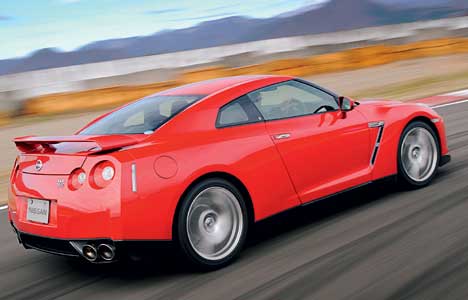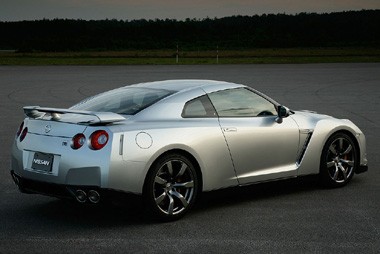Review
Compared with some rivals, Nissan isn’t short of iconic cars with strong heritage.
There’s the rugged Patrol, the sleek Z and the hi-tech, high-performance Skyline.
The latest flagship drops the Skyline name, simply using the GT-R moniker.
The GT-R is available only through 10 specific Nissan High Performance Centres, although reservations may be placed online, followed by paying a deposit at one of the centres within 30 days.
There’ll be a long wait, though – the factory only builds 12,000 a year – nowhere near enough to satisfy global demand.
Once orders are confirmed, customers are given access to a password-protected area of the GT-R website with progress reports and an anticipated delivery schedule.
An additional feature while they’re on the waiting list is a ‘concierge’ service whereby customers needing route guidance, travel information or hotel and flight bookings can have this information provided by Nissan.
They can opt to retain the service for an annual fee once their car has been delivered.
The first customers of the UK-spec GT-R will take delivery in April 2009, a year after it smashed the lap record at the Nürburgring, making it the quickest ever production car over a single lap.
The GT-R’s cabin has a purposeful appearance but is a little lacking in excitement.
However, all the instruments are clearly laid out and the LCD screen can offer all sorts of additional driving information for hardcore enthusiasts.
But unlike its predecessors (the Skyline R33 and R34), the GT-R’s cabin actually feels worthy of a £50,000-plus car with plush leather and soft-touch fittings.
The hand-built 480bhp 3.8-litre twin-turbo V6 engine produces 433lb-ft of torque from 3200-5200rpm.
The car will reach 62mph from rest in 3.5 seconds and is capable of reaching 195mph flat out.
It is fitted with a dual-clutch six-speed transmission, which combines the smooth shifts of an automatic transmission with the control of a manual gearbox.
In automatic mode, shifts are made to optimise fuel efficiency; in manual mode the paddle shift ensures lightning-quick gearchanges.
‘R’ mode is designed for track use and predicts the next gearchange according to throttle position, vehicle speed, braking input and other factors.
Effectively, on a track in ‘R’ mode, the gearbox ensures all downshifts are completed before reaching a corner, and is set up for optimum acceleration on the way out.
No doubt Nissan has invested vast sums to ensure the GT-R does not disappoint customers.
But it has also produced the most accessible supercar ever conceived.


Behind the wheel
It would be relatively easy to throw technology at the chassis of the GT-R as a shortcut to acceptable on-road behaviour, but the degree of adaptability available by changing various settings proves that the car has been thoroughly developed.
It feels as comfortable as a Micra pottering around at low speeds, yet it is astonishingly easy to drive flat out.
Perhaps this takes away some of the driver’s direct involvement, but also serves to flatter the less confident when driving enthusiastically.
It is possible to change the damper and stability control settings to optimise the car’s performance according to the conditions.
Our time behind the wheel so far has been limited to the racetrack, but it responds intuitively and progressively to steering inputs, and grip when cornering feels pretty relentless unless provoking the car to step out of line.
The brakes are also supremely effective, coping with high-speed punishment for multi-lap stints with only a few minutes’ break between.
Specification
Engine 3.8-litre twin-turbo V6 petrol 480bhp
Performance 0-62mph 3.5 sec; top speed 195mph
Transmission 6sp dual clutch manual
Efficiency tbc
CAP RV 3yr/30k tbc
Rivals Porsche 911, Audi R8, BMW M6
Strengths Supercar performance in an accessible package
Weaknesses Limited supply
Factsheet
No information available.














Login to comment
Comments
No comments have been made yet.